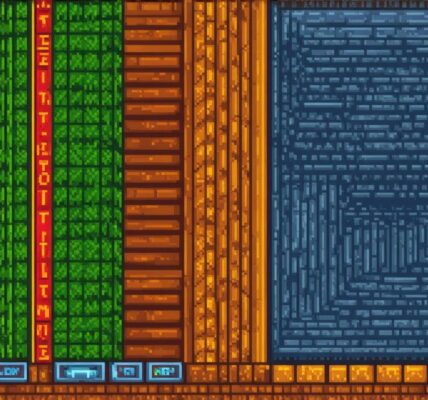Introduction:
Creating a video game soundtrack can be a daunting task for any developer. Not only do you have to create music that complements the gameplay and enhances the player’s experience, but you also need to ensure that it is optimized for different platforms and devices.
Understanding the Importance of Music in Video Games:
Music plays an essential role in video games. It sets the mood, creates a sense of immersion, and enhances the overall experience of the player. A well-crafted soundtrack can also help to build brand identity and create a strong emotional connection with the player. However, creating a soundtrack that works for different platforms and devices can be challenging.
The Role of Music in Gameplay:
Music is an integral part of gameplay. It can be used to enhance the mood of the player, set the pace of the game, and create tension or excitement. The right music can also help to guide the player through different levels and create a sense of progression.
The Role of Music in Brand Identity:
Music is an excellent tool for building brand identity. A well-crafted soundtrack can help to establish a consistent brand voice and create a strong emotional connection with the player. This can be especially important for independent developers who are trying to make a name for themselves in the gaming industry.
How to Create a Video Game Soundtrack:
Creating a video game soundtrack involves several steps. Here is a step-by-step guide on how to create a soundtrack that will take your game to the next level.

Step 1: Define Your Sound Design Style
The first step in creating a video game soundtrack is to define your sound design style. This involves deciding on the type of music you want to use, the instruments you will use, and the overall tone and atmosphere of the game. You can also consider using sound effects and ambient noise to create a more immersive experience for the player.
Step 2: Choose Your Music Software
Once you have defined your sound design style, it’s time to choose your music software. There are many different options available, including free and paid versions. Some popular options include Ableton Live, Logic Pro X, and FL Studio.
Step 3: Create the Main Theme
The main theme of your game is the most important part of your soundtrack. It should be catchy, memorable, and evoke the emotions you want to convey in your game. You can create the main theme using any instrument or combination of instruments that you think will work best.
Step 4: Create Background Music
Background music is the music that plays in the background while the player is playing the game. It should be subtle and not distract from the gameplay. You can use a variety of different instruments and techniques to create background music, including loops, samples, and layering different tracks.
Step 5: Create Sound Effects
Sound effects are an essential part of any video game soundtrack. They help to create a more immersive experience for the player and add to the overall atmosphere of the game. Some examples of sound effects you can use include footsteps, gunfire, and explosions.
Step 6: Test Your Soundtrack
Once you have created your soundtrack, it’s important to test it thoroughly to ensure that it works well for different platforms and devices. You can test your soundtrack using different software and hardware configurations to ensure that it sounds good on all devices.
Case Study: Creating the Soundtrack for Minecraft
Minecraft is one of the most popular video games in the world, and its soundtrack has become an integral part of the game’s identity. The game’s creator, Markus Persson, created the music himself using a variety of different instruments and techniques. Here are some tips he shared about creating a successful soundtrack for Minecraft:
Tip 1: Keep it Simple
One of the key things to keep in mind when creating a soundtrack for Minecraft is to keep it simple. The game’s music should be catchy, memorable, and easy to listen to.




